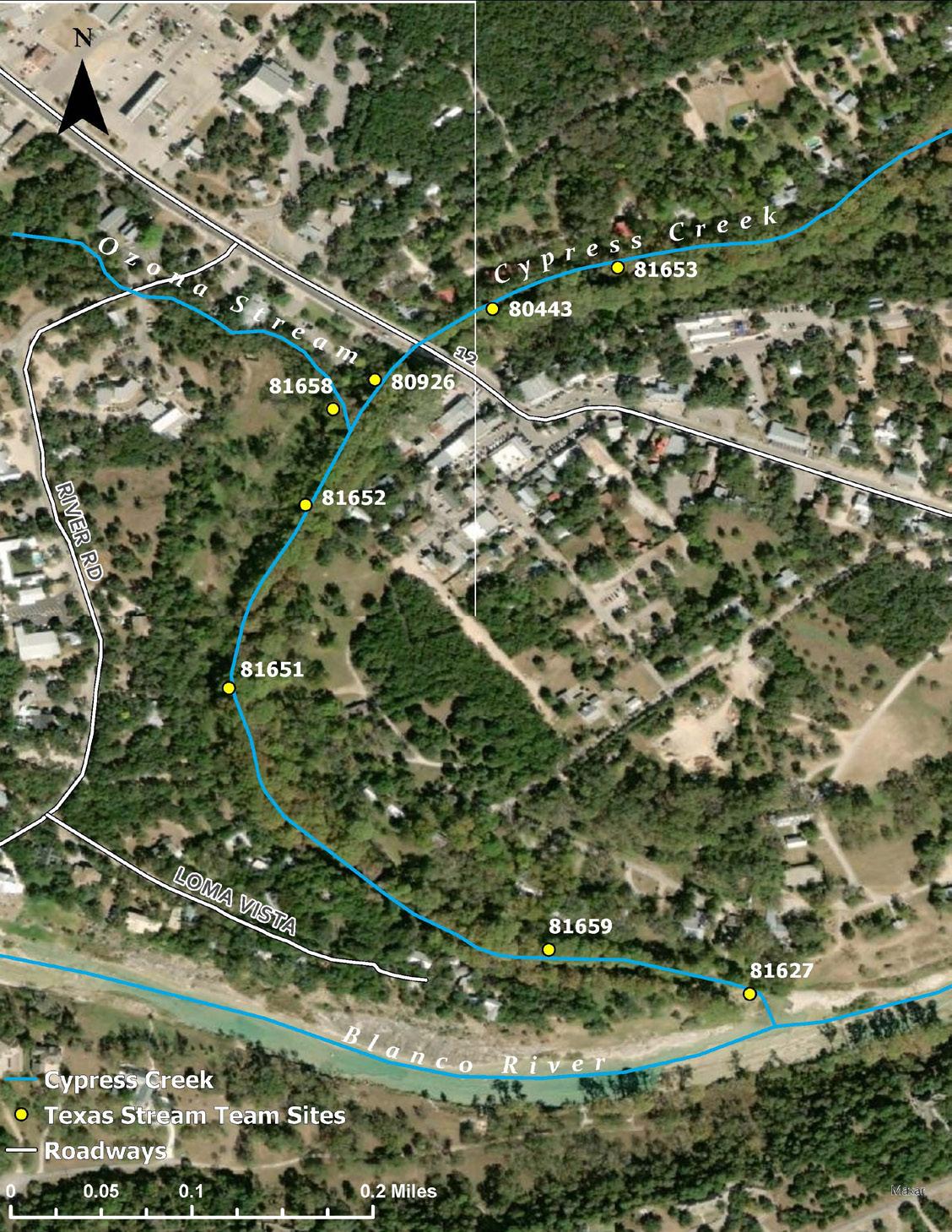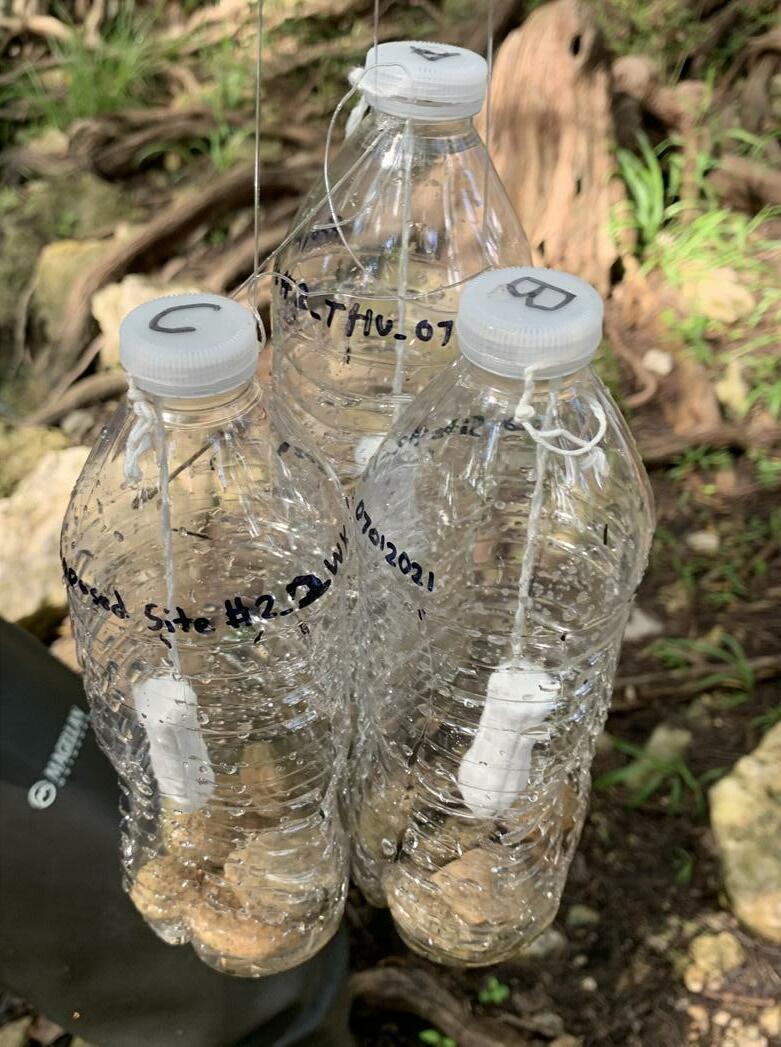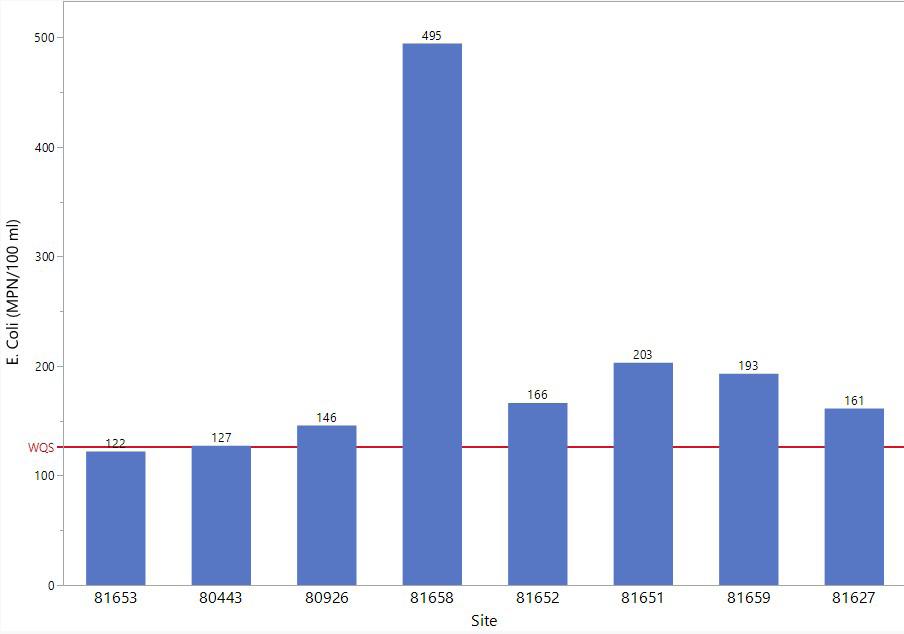
4 minute read
E. Coli Bacteria and Optical Brighteners Assessment on Lower Cypress Creek
Lower Cypress Creek Pilot Project:
Concurrent Assessment of E.coli Bacteria and
Advertisement
Optical Brighteners By Sandra Arismendez, Senior Watershed Scientist and Research Coordinator & Nick Dornak, Director of Watershed Services The Meadows Center for Water and the Environment
Thirty-two percent of surface water assessed in Texas does not meet the bacteria water quality standard for primary contact recreation (TCEQ, 2020). Cypress Creek in Hays County is not on the list of impaired waters for the contact recreation use but the lower reach is showing signs of water quality degradation and consistently exceeds the state’s E. coli bacteria water quality standard (126 CFU/100 ml). This is cause for concern because of the recreational activities such as swimming, kayaking and fly fishing that take place on Cypress Creek and the important role tourism plays in the economy of the area.
E. coli bacteria originate in the digestive tract of endothermic organisms, are found in feces of warm-blooded animals, and are used by state and federal agencies as freshwater indicators of potential pathogen contamination. Water quality standards have been established using E. coli bacteria for determining support/non-support of the contact recreation use in areas frequented by recreational enthusiasts. Optical brighteners are chemical compounds or dyes added to laundry detergents, cleaning agents, textiles, synthetic fibers, and many kinds of paper including toilet paper to make them appear brighter. Optical brighteners have been used by researchers as surrogates of wastewater contamination from illicit discharges in storm drains and failing septic systems because they adsorb to cotton and fluoresce under ultraviolet light, therefore can be easily detected. Optical brightener monitoring and detection can assist in pollution screening and source identification in areas where fecal contamination is known to occur. Researchers around the country have used a combination of targeted bacteria and optical brightener fluorescence to detect human fecal contamination. Historically, monitoring in Cypress Creek occurred quarterly on an annual basis but did not include optical brightener monitoring as a pollution screening tool. This project employed more frequent spatial and temporal E. coli bacteria sampling in lower Cypress Creek and included “tampling” monitoring for optical brightener detection of wastewater contamination.
The lower Cypress Creek project included two phases. Phase I consisted of concurrent targeted E. coli bacteria, field parameters (i.e., water temperature (°C), dissolved oxygen (mg/l), pH (s.u.), and specific conductance
Figure 1: Lower Cypress Creek Texas Stream Team Monitoring Sites 16
2022 BASIN HIGHLIGHTS REPORT

Tampling Monitoring Devices
(µS/cm)), and optical brightener monitoring at eight sites on lower Cypress Creek twice weekly for thirteen weeks from June 27 thru September 19, 2021 (Figure 1). The monitoring frequency conducted during phase I was designed to identify and compare bacteria concentrations during different times of the week (Sunday and Thursday) and to detect optical brighteners (presence/absence) associated with potential wastewater contamination using the “tampling” method with organic cotton tampons. Phase II consisted of an extension of the sampling at the same eight sites as for phase I, a modification of the sampling frequency to once a week (Thursdays) and the suspension of “tampling” monitoring for the detection of optical brighteners. Texas Stream Team citizen scientist monitoring protocols were implemented for the E. coli bacteria and field parameters. The optical brightener “tampling” monitoring was conducted using a modified optical brightener “Tampling – Volunteer Procedures (Beta version)” prepared by Dr. Kelly Albus, Extension Program Specialist at Texas A&M AgriLife.
Phase II of this study is currently ongoing, but preliminary results infer sources of E. coli bacteria contamination likely originate from a bat colony inhabiting the underside of the RR12 bridge, nonpoint source runoff during rainfall events and/or leaking wastewater from on-site septic systems. E. coli monitoring results showed a significantly higher geometric mean downstream of the RR12 bridge than upstream of the bridge where the bat colony is located. In addition, Ozona Stream, a tributary merging with Cypress Creek below the RR12 bridge, exhibited a constant flow and had the highest E. coli bacteria colony counts throughout this study (Figure 2). There was a strong correlation between E. coli bacteria and rainfall accumulation at all Cypress Creek sites which supports contamination due to nonpoint source pollution during rainfall events from the surrounding urbanized areas. Optical brightener fluorescence was detected at all sites and for all deployment treatments during phase I of the project, indicative of wastewater influence throughout lower Cypress Creek.
Future direction for this project will be to continue to monitor water quality including E. coli bacteria and field parameters using the Texas Stream Team protocols at all sites. The optical brightener “tampling” monitoring was suspended after phase I because all sites/treatments were exhibiting fluorescence with no discernable differences. As a follow-up to this project, we will be quantifying fluorescence using a handheld fluorometer alongside the “tampling” method to develop a colorimetric scale to help with interpretation of the visual observations.










